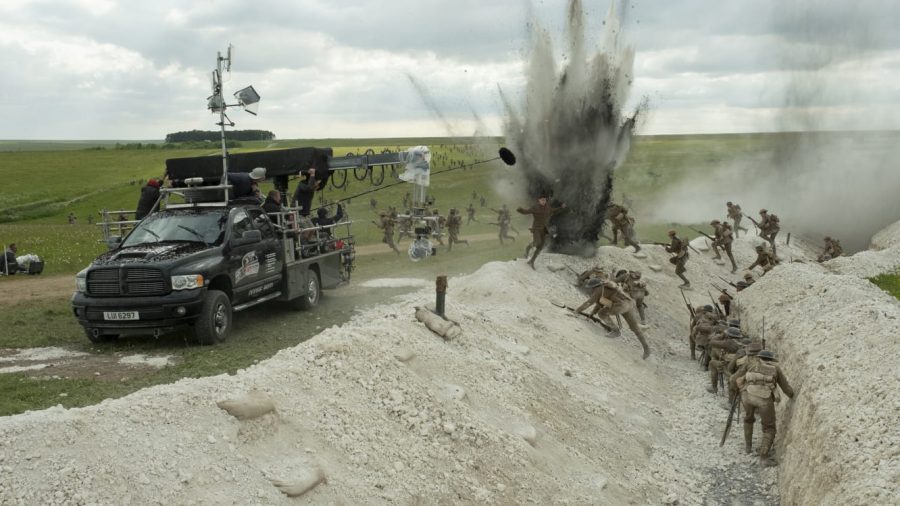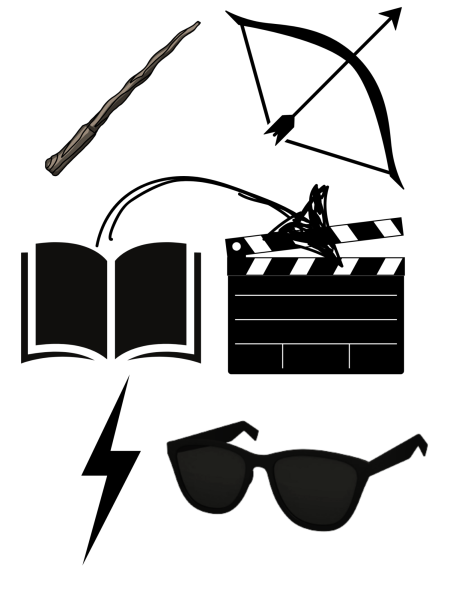1917: The horrors of war in a single shot
François Duhamel/Universal Pictures and DreamWorks Pictures
”1917” required precision timing, extensive planning and some technological help to film the one-shot masterpiece
“1917,” set during World War I, follows two British soldiers as they travel through hostile territory on a mission to save 1,600 men from certain annihilation from a German trap. It’s a story inspired by director Sam Mendes’s grandfather’s own experience in World War I.
The pair, Lance Corporal Blake (Dean-Charles Chapman) and Lance Corporal Schofield (George McKay), journey through perhaps the most authentic and horrifying depiction of the hellish nightmare that was the first world war, and through the movie’s impressive, seemingly one-shot cinematography, the viewer takes the journey with them. From rotting carcasses to ghastly dead bodies, the viewer is exposed to the utmost brutality of devastation that occurs in war, which is given little attention in popular culture. Although “1917” devotes little time to character development and the story is as simple as they come, the film tells a gut-wrenching war drama that breaks the mold in a sometimes formulaic genre.
“1917” only has one visible cut in the entire movie, although it is not actually one continuous shot. This means that, with one exception throughout the film, there is no visible scene change. It appears as if the movie is one continuous shot, but it really is just well-edited long takes. Academy Award-winning cinematographer Roger Deakins (“Blade Runner 2049”) was given the difficult task of hiding the cuts. This required intense planning, timing, practice, filming and editing.
To start, everything had to be perfectly planned. Making sure the set design was perfect was integral to the filming, as the camera couldn’t make mistakes. According to CNN, a model was built for every set, and each set was built from scratch. Nearly 5,200 feet of trench was dug for the film. The filming took place at multiple locations, including Shepperton Studios and Salisbury Plain in southern England.
Conservationists raised concerns over the filming at Salisbury Plain, worrying that it might disrupt undiscovered remains, The Guardian reported. So, a survey had to be conducted before any construction could begin. When filming around Low Force, a waterfall on the River Tees, the production staff had to post signs warning walkers in the area that the bodies strewn throughout the area were prosthetic and not to be alarmed by them, according to the Northern Echo, a newspaper based in England.
All the set designs had to incorporate specific paths for the camera crew, which followed the actors through the often maze-like No Man’s Land. This required everything to be exactly timed, too. If a shot was eight minutes long, it had to take eight minutes to get from point A to point B. Due to this, on-set walkthroughs took four months, making sure everything was gauged down to the second, reported Insider (formerly Business Insider). In most films, these can be done on the day of filming.
The cameras posed a difficult challenge for the movie as well. They had to be lightweight and portable to allow for flexibility during the takes, but also provide high-definition picture quality. To satisfy these requirements, Deakins acquired three prototype lightweight Alexa cameras from ARRI, a company that provides cameras and film equipment for motion pictures. These cameras allowed the crews to use stabilizers that wouldn’t have worked with heavier cameras.
One of the movie’s most important framing devices, lighting, was another crucial task impressively tackled in the movie. Some artificial lighting was used, including a 50-foot light tower that was used to create a blazing fire. However, in most cases, they had to rely on natural light because setting up any light fixtures would create a spot that couldn’t be filmed. In addition to this, the lighting had to be consistent as the plotline takes place in a span of only a day and a half. If there was even the slightest bit of too much sun, filming had to be stopped. In fact, there is only one sunny scene in the entire movie.
For the movie to work, everything had to come together. The camera had to be perfectly in sync with the actor, as even a small mistake meant the whole take had to be redone. The long climatic shot where Schofield runs alongside a trench was a massive undertaking that pushed the limits of the techniques being used.
The camera started on a 50-foot crane that is on the right-hand side of Schofield. As Schofield climbs over the trench, the crane moves the camera with him, until it is taken off the crane. The camera is then hooked onto another crane, which is on the back of a tracking vehicle already moving forward. Once the camera was secured, the vehicle followed Schofield as he ran for about a quarter of a mile. During the impressive sequence, explosions were going on in the background. According to Insider, the crew only had enough explosions for four takes, so getting the shot right the first or second time was crucial.
Without the magnificent cinematography, there is no chance the movie would be nearly as good as it is. The story is somewhat compelling, although that mostly comes from the fact that World War I is rarely depicted in American media and it’s refreshing to see it on the big screen. The viewer does become attached to the characters, although, again, this is mainly achieved through the fantastic cinematography. Without the stylization presented through the filming, this movie would not have gotten as many accolades as it has.
Although lacking in some storytelling depth, the filming conveys such emotion that even the barebones storyline can bring the audience to tears. “1917” definitely deserved its 2020 Golden Globe wins, and it has deservingly made itself a top contender for Oscar victories as well.








